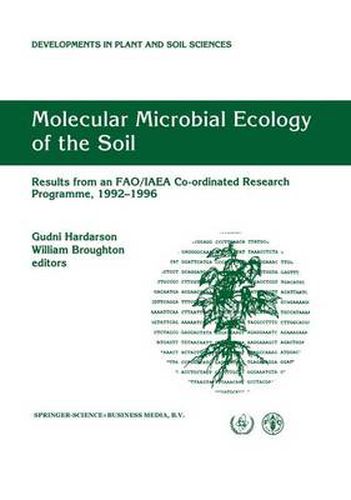Readings Newsletter
Become a Readings Member to make your shopping experience even easier.
Sign in or sign up for free!
You’re not far away from qualifying for FREE standard shipping within Australia
You’ve qualified for FREE standard shipping within Australia
The cart is loading…






Grain legume crops, e.g. common bean (Phaseolus vulgaris L.), and soyabeans (Glycine max L.) are amongst the main sources of protein in Africa, Asia and Latin America. Their high protein content derive from their ability, in symbiosis with Rhizobium bacteria, to fix atmospheric nitrogen. Incorporating contributions from molecular biologists, microbiologists, plant breeders and soil scientists, this volume reports the results of an FAO/IAEA Co-ordinated Research Programme (1992-1996), whose main objective was to develop molecular biological methods to study rhizobial ecology. Use of better tracking methods will help enhance biological nitrogen fixation and thus grain legume yields, while reducing their reliance on soil- and/or fertilizer-nitrogen. This volume will be invaluable to scientists working on biological nitrogen fixation, soil microbial ecology and legume production.
$9.00 standard shipping within Australia
FREE standard shipping within Australia for orders over $100.00
Express & International shipping calculated at checkout
Grain legume crops, e.g. common bean (Phaseolus vulgaris L.), and soyabeans (Glycine max L.) are amongst the main sources of protein in Africa, Asia and Latin America. Their high protein content derive from their ability, in symbiosis with Rhizobium bacteria, to fix atmospheric nitrogen. Incorporating contributions from molecular biologists, microbiologists, plant breeders and soil scientists, this volume reports the results of an FAO/IAEA Co-ordinated Research Programme (1992-1996), whose main objective was to develop molecular biological methods to study rhizobial ecology. Use of better tracking methods will help enhance biological nitrogen fixation and thus grain legume yields, while reducing their reliance on soil- and/or fertilizer-nitrogen. This volume will be invaluable to scientists working on biological nitrogen fixation, soil microbial ecology and legume production.